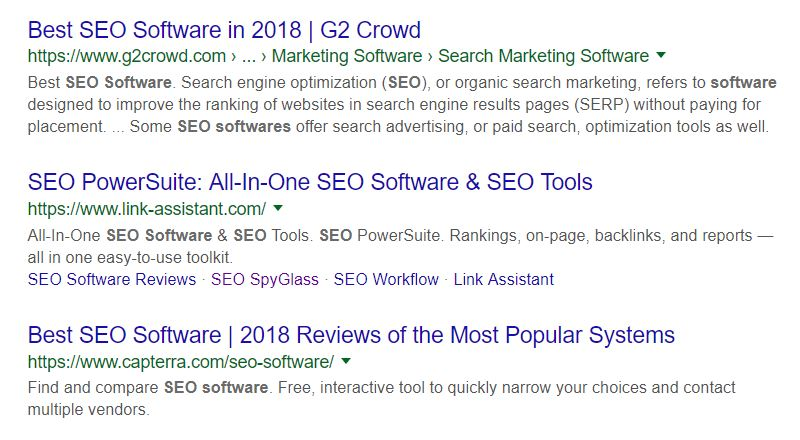One of the most common issues businesses face when first starting with SEO is not having relevant keyword targets outside of their brand terms. This can be problematic because most of your new potential customers won’t be familiar with your brand yet – meaning they may never find you!
Why does this matter? You want to be able to rank for terms within your industry and company niche so potential new customers can find your site and what you offer.
Identifying Your First Keywords
So… How do you get started?
If you don’t have any current keyword targets in place, one way to start is by pulling keyword data from your main competitors. Using tools like SEMrush, Ahrefs, or even Google’s own Keyword Planner, you can create a list of all the keywords where your competitors rank, then find overlapping queries that are targeted by your competitors most regularly.
If several of your competitors are ranking well for the same keyword, that’s usually a a good indicator that you should include it with your own optimization efforts.
Once you have your list of keywords, filter out the ones that are not relevant to your company’s specific products or services – if you don’t sell it, there’s no point in ranking for it.
Since you’re just getting started, you don’t have to worry too much about search volume right now, especially if you are a part of a smaller niche. Establishing your presence should be the priority right now.
Informational vs. Transactional Queries
There are two main ‘types’ of keywords that you’re going to come across during your investigation: informational and transactional.
Both of these keyword types serve a purpose, but understanding the distinction is essential in making sure you’re optimizing for the right traffic.
Informational Keywords
A large percentage of the keywords you find will likely be informational keywords. A keyword is considered informational when a user is looking for specific information or wants to learn more about something.
One example of this would be if you search for a word like “SEO,” you will get informational results showing, “What is SEO?” and “Things you should know about SEO.”
Informational keywords also tend to have higher search volumes, but the trade off is that they’re also higher up in the marketing funnel – and far less likely to convert as a result.

Unless your running a blog or a news web site, you likely want to bring people to your site because you are trying to sell something. Your focus then should be on transactional queries.
Transactional Keywords
A transactional query is where a user is looking to do something, like making a purchase, downloading a whitepaper, registering for an event or anything else that results in some form of exchange of goods or services.
For ecommerce businesses, this is usually as straight forward as the product name (although it’s even better if it’s accompanied by terms like “buy” or “for sale”).
For B2B or SaaS businesses, it can be a bit more difficult to identify transactional keywords, since what you offer can often be split between informational and transactional.
Here’s a pro tip for some initial ways to make your keyword targeting more transactional: Add transactional modifiers to them!
Just as ecommerce adding “buy” or “for sale” to an ecommerce keyword automatically makes a keyword more transactional, you can use words like “software,” “service,” and “solution” to optimize for keywords with more buyer’s intent.
Which ones you should use is dependent on your business. If you’re a SaaS company, you probably want to use “software,” but a B2B landscaping company would typically use “services” instead. If you don’t fit neatly into either category, you’ll probably want to go with “solutions,” but do be aware that these can also still be fairly informational.
You can take the informational keywords from your list and attach software, service or solution to the end of your target phrases. Then you have keywords that your audience is searching for with a buyer intent associated.
With this example, if search for “SEO software” you get results with business directories and products that you can buy.

Let’s Talk About Clicks
Okay, so you’ve got a nice list of potential keyword targets and you’ve narrowed it down to some transactional-focused opportunities… now what? How do you implement these new conversion-friendly keywords on your site?
That’s a much broader question and a bit outside of the scope of this introduction, but here’s a quick tip: The quickest wins are often through including your new keyword targets in the title tags of your pages.
Having a strong, relevant title tag can impact your rankings, click-through rates and overall traffic, so including buyer’s intent keywords in them is essential. You should also include these keywords within your page copy to help rank for those terms, but the title tag is the first thing people see in the search results. It helps determines if a user will click on your site or a competitor’s – meaning a potential sale could be over before they even see your copy.
Your new title tag could look something like this:

Don’t forget your basic SEO optimizations: keywords should be placed in the beginning of the tag, include call to action like learn, discover, buy and download, and close your title tag with your brand name.



















